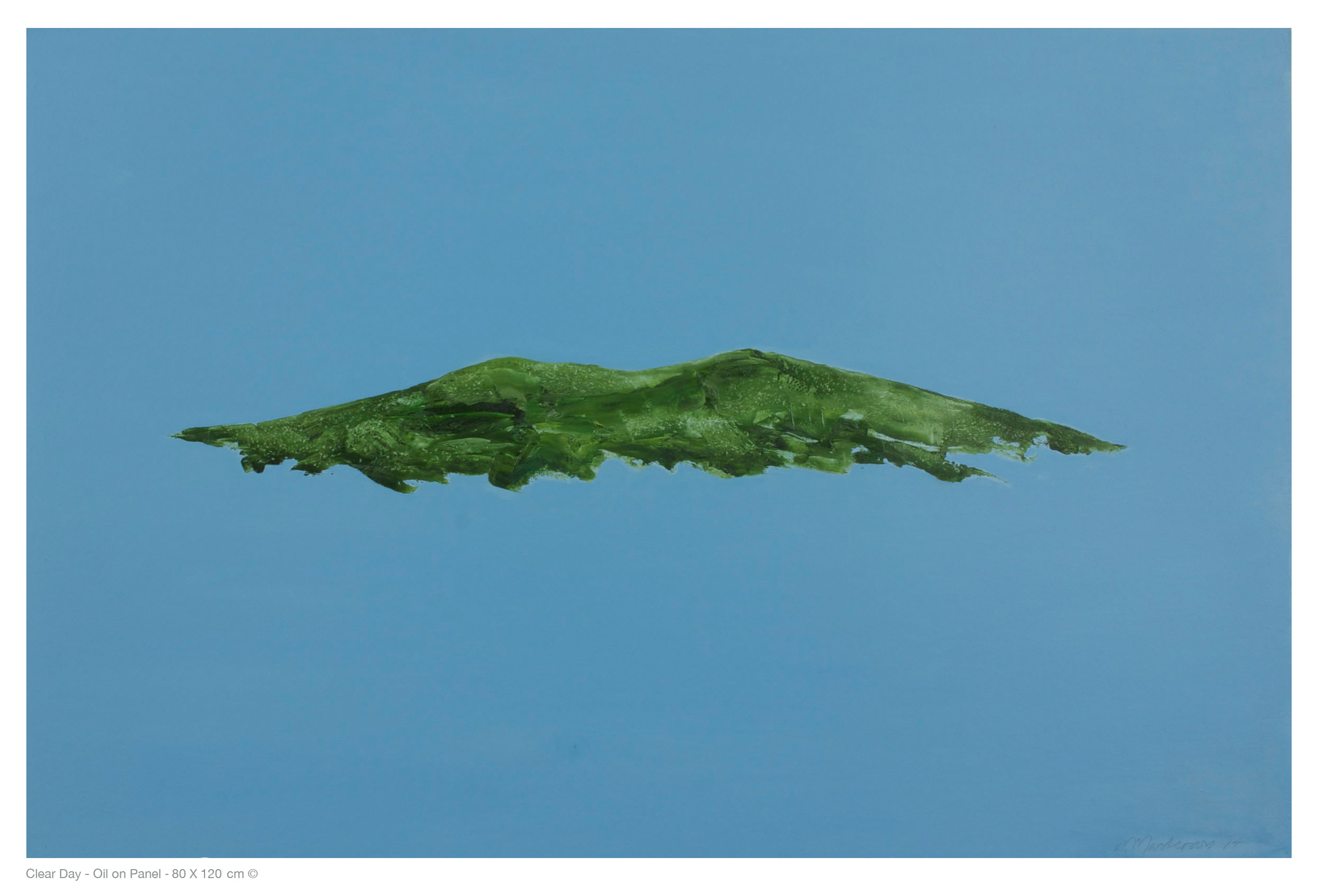Weather
Draiocht Ars Centre 2014
















Artist Statement
Landscape as Untamed Nature
Until well into the nineteenth century, traveling was very difficult. Roads were roughly made and public transport poor. Romantic art expressed peoples fears about the dangers of travel, which could be heightened by difficult weather conditions. But just like people today love to be frightened at a distance by disaster films such as Titanic they were inspired by paintings of the unknown and the awe-inspiring. It was Jacob Van Ruisdael (1629-1682), John Constable (1776 – 1837) and William Turner (1775 – 1851) who made wild nature acceptable as a subject matter in its own right. Ruisdael saw how important the sky could be to the mood of a landscape and demonstrated this with his formation of rain filled clouds in the painting titled Landscape with Rain. Constable observed the sky with unusual care and made detailed oil studies often noting the exact time of day, the wind speed and direction, examples of these studies can be seen in the Victoria & Albert Museum. In 1828 /9 Constable worked on Sketch for Hadleigh Castle, in which he shows a landscape after a storm. He painted this picture after his wife died as a metaphor of his desolation. But Turner was the real master of documenting the drama of nature. One characteristic feature of Turner’s painting was his use of whirling, vortex like compositions to suggest a sense of energy and movement. The most spectacular example is the famous painting Snowstorm 1842, Tate Gallery, where sky and sea seem to heave together in dramatic unison at the height of a storm. A storm he witnessed at sea and asked to be tied to the mast in order to get the total experience. With regard to our own historical journey, the Great Famine was essentially caused by the weather, with specific conditions facilitating the rapid spread of the potato blight and the resulting devastation that ensued. Summers prior to 1845 were unusually wet and warm allowing the blight to flourish, whereas in Europe it died out, as their summers were hot and dry.
In the last decade we have experience the results of global warming and the effects of this on our earths surface can be seen from images taken by satellites in space. As a result of climate change our weather systems have become extremely erratic, locally, nationally and globally. This evidence ranges from earthquakes, tsunamis, landslides, floods, and tornados, all recorded on the earth’s surface from space, highlighting the changing forces of nature upon our planet.
The Irish landscape is no exception to this phenomenal. Within these past few years the Irish landscape has experienced an exceptional summer in 2013, followed by raging storms, volcanic ash clouds, high precipitation levels, rising seas, floods, earthquake tremors, tornado’s, and a wonderful display of Northern lights in the north west of the country in early March 2014 adding to our intrigue.
There is something intrinsic about the Irish people and the weather. It’s a national obsession. It has shaped our history and landscape and it affects our daily lives. Perhaps its because we’re an island off an island west side of Europe with the Atlantic sea on one side resulting in complex weather systems. Even in language our first greeting, is usually about the weather, it’s how we start conversations, we seem to deem the topic of such interest that we use it as an icebreaker.
As a painter landscape has always been my place of interest, my starting point so to speak, layered with time, place, and memory. In this collection of new works my response to the landscape (both the beauty and the terrors of nature) is to ‘poeticise’ it, just like early nineteenth century artists did. Weather changes landscape, it shapes it, and subsequently our relationship and response to it.
Bernie Masterson

'A change in the weather is sufficient to recreate the world and ourselves'
Marcel Proust
Selected Works

The Bureaucracy of DreamsProject type

The Call of the ShannonProject type

Are Ye Dancin?Project type

How To Make A Magic CarpetProject type

She Sings Within WallsProject type

The Longest NightProject type

Last DanceProject type

FlightProject type

Three Generations of Queers’Project type

Strange FishProject type

Incarceration AltarsProject type

The Art of WritingProject type

Bold Writing - ImpedimentaProject type

WeatherProject type

InvocationProject type

Drawing on the BodyProject type